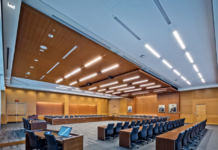A recent Pembina Institute study points to how the transit system in Toronto is not keeping up with the growth of the city’s population, despite the loyalty of its riders. The study revealed Vancouver has built 44 km of rapid transit, while Toronto has only built 18 km during the same 20-year period.
A newer study, “Global Transit Investments and Ridership,” by Prof. Jeff Casello and graduate student Kevin Yeung at the University of Waterloo, along with the Waterloo Public Transportation Initiative (WPTI) confirms these results, adding that, “Toronto and Montreal have both missed opportunities to vastly expand the role of transit in promoting sustainable, reliable, and economically-supportive transportation networks.”
Casello and Yeung’s study expands on the Pembina study by comparing major Canadian cities to their American and international counterparts. According to the study, ridership in Canadian cities is higher than their American counterparts. In almost every case, Canadian city ridership levels per capita exceeded American cities. For example, Toronto’s ridership is 12 times greater than that of Dallas.
In addition, American cities have been recently investing more heavily into their transit systems (Dallas built over 100km of LRT in the past 16 years). Casello and Yeung believe that these American cities are making conscious efforts to “improve transportation choice and sustainability,” and to reverse the North American trend of “auto dependence.”
With the rate of startup and community growth in Waterloo, students and community members are turning an eye to the new transit systems being put in place in the Region of Waterloo.
The goal of the new ION system is to help combat the ever-growing need for public transit. Construction of the new rapid transit system began last month at the groundbreaking event Aug. 21.
“For us to be building rail transit now is really very progressive,” Casello said. “We’re way ahead of the game … We’ve grown outward but not so much [that] we can’t maintain a central spot.”
The Region of Waterloo’s rapid transit system plans to add 36 km of service by 2017 as part one of a two-stage process. The rapid transit system includes a light rail transit system featuring electric trains running on a separate track from regular traffic (LRT), and an adapted rapid bus transit system.
Although Waterloo has opted for an LRT instead of a subway, Casello believes that subways still have a place in extremely dense urban areas, but that they’re very expensive and have limited reach. When comparing fully exclusive underground systems like subways to bus services there is a huge gap in performance, Casello believes that light rail fits in between.
Students generate a lot of demand on public transit systems, which pushes for improvements to the system as a whole. This, in turn, improves service for the community, which increases ridership. WPTI’s research shows that ridership in Kitchener and Waterloo has increased from nine million people a year in 1995 to almost 20 million in recent years.
Casello also believes that it’s important for the region to be better connected to Toronto and Mississauga and that upgrading the rail system between these two major urban areas will make the Waterloo Region a more attractive area to live and work. KW’s transit system willl stack up favourably in the future compared to Toronto’s.
































